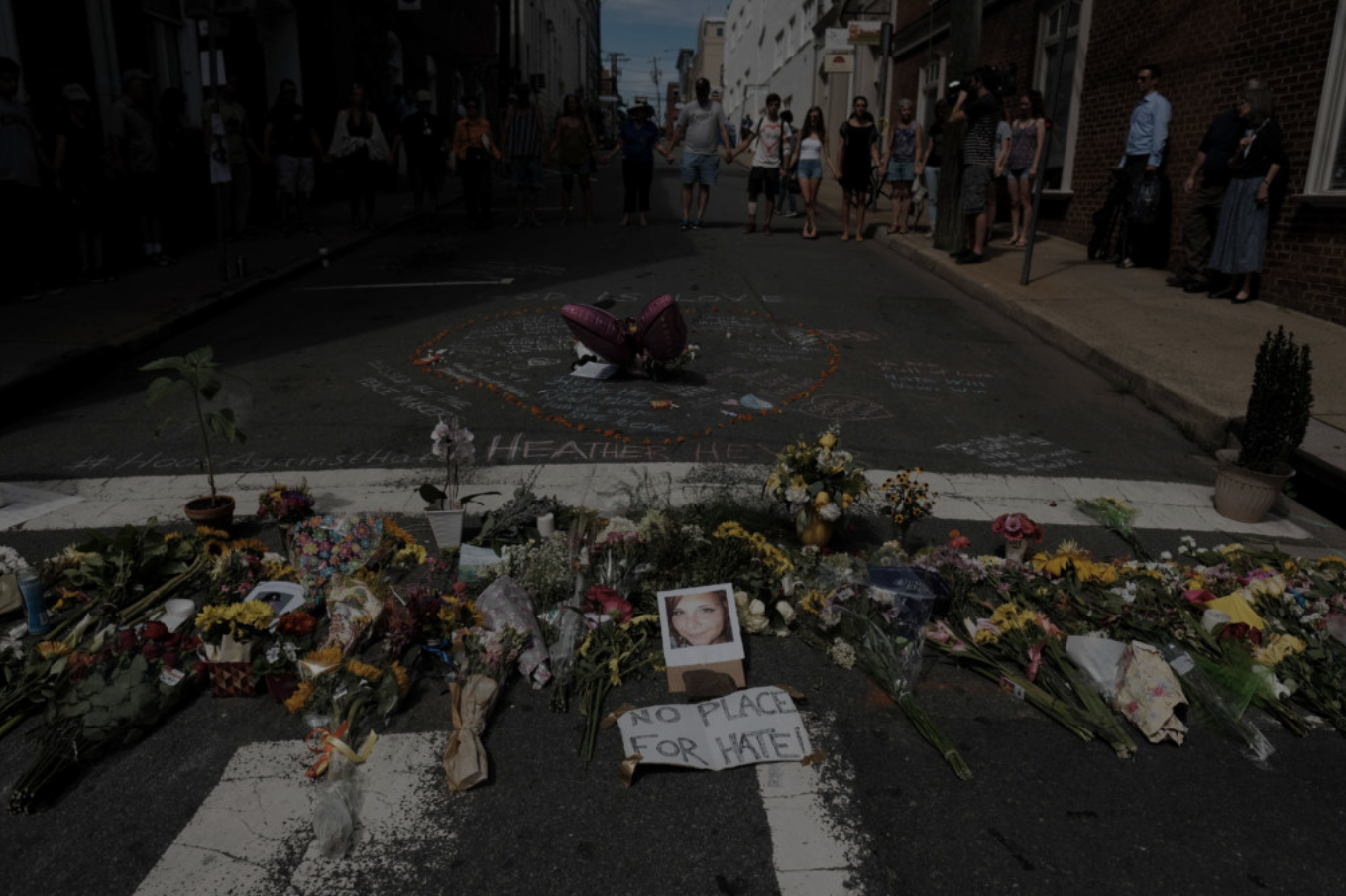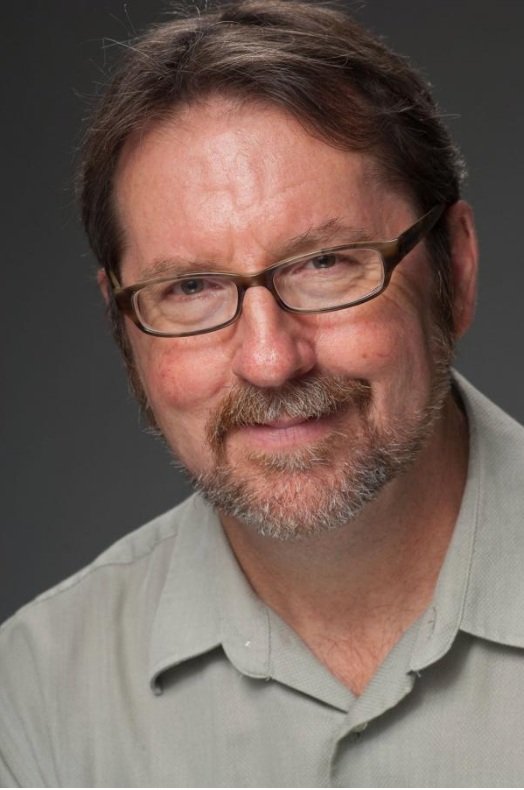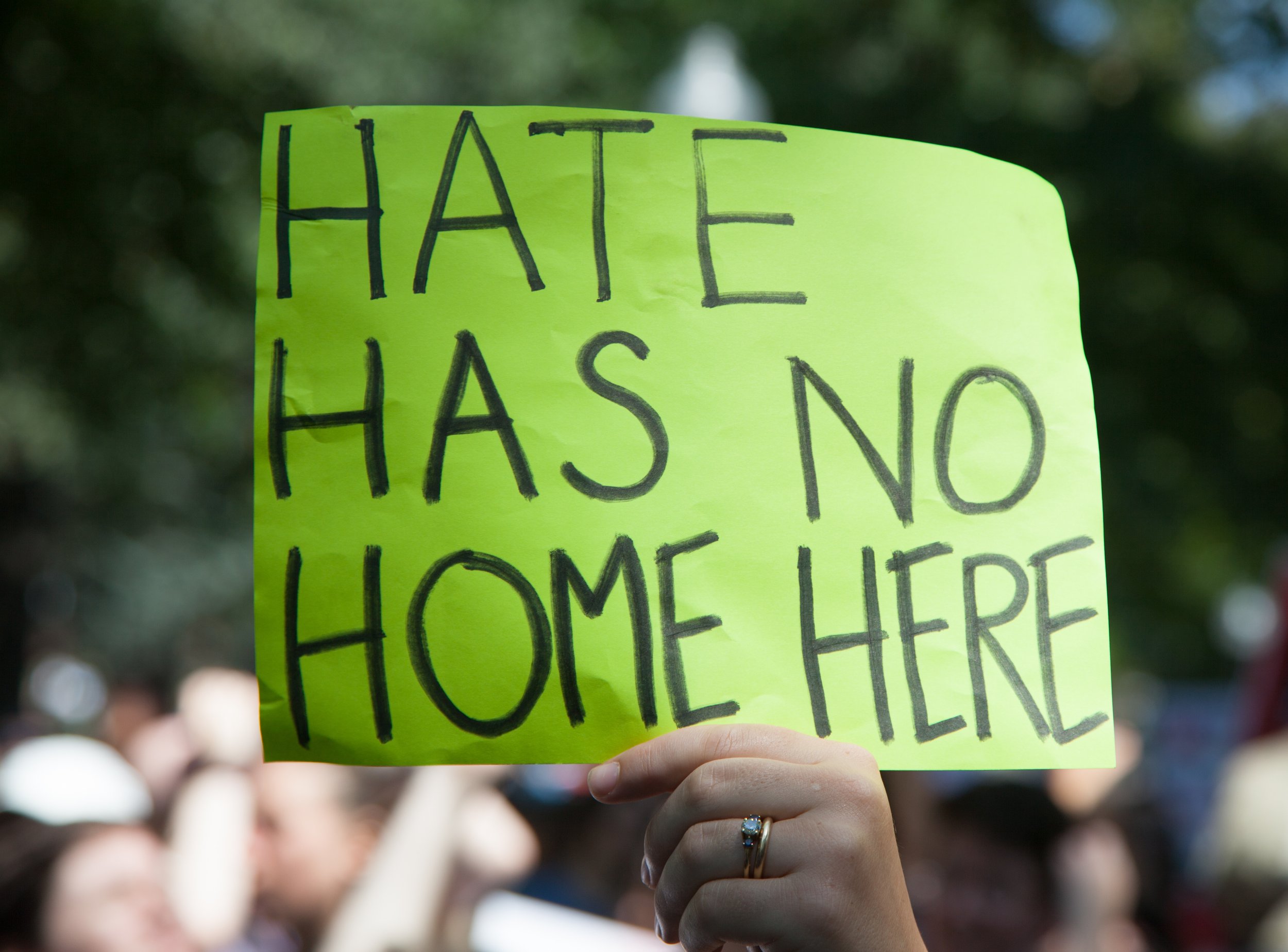
POINT OF VIEW
ESSAY
by William Maddocks
White Supremacy In New Hampshire
During the summer of 2018, dozens of New Hampshire civic leaders had the chilling experience of being the target of a public attack by a self-proclaimed White Supremacist. A shadowy group called the New Hampshire Nationalists had posted a racist statement on their website attacking those who had attended a workforce diversity conference sponsored by Eversource. Among those identified by name were corporate leaders, Governor Sununu, social service and immigrant rights advocates, and others. For many of the non-BIPOC people identified, this may have been the first time they felt like they were publicly targeted for being an ally to those who would benefit from Diversity, Equity, and Inclusion initiatives. To the BIPOC people doxed by the white supremacist website, it mostly felt like just another racist attack that is part of life.
But who are the New Hampshire Nationalists? It turns out that the “group” may be just one man, Ryan Murdough, a one-time GOP state rep candidate. It could be easy to dismiss Murdough, who since 2018 has posted many inflammatory and racist posts on the far-right social network Gab, as “just a single malicious person.” However, the actions of solitary racist provocateurs, despite not being part of a coordinated, larger group, have proven dangerous. This possibility of devastating consequences was shown in the April 19, 1995, bombing of the Alfred P. Murrah Federal Building in Oklahoma City. The attack killed 168 people, 19 of whom were children, and injured 680. This attack was carried out by Timothy McVeigh and Terry Nichols, self-described “Patriots,”who were avowed white supremacists and enemies of the U.S. government but represented no known anti-government group.
At this time in the United States, we are at an inflection point. What were once fringe groups of white power skinheads, Nazis, Neo-Nazis, Ku Klux Klan (KKK), and others who professed a doctrine of hate and race war have now become the vanguard of a social media-fueled ecosystem of hatred, normalized by people in positions of power.
A Historical Look at White Supremacy
How did we get to this place in a country founded on democratic principles? Using hate as a tool to identify, marginalize, control, and terrorize those whom the political leadership considered to be standing in the way of their definition of progress can be traced back to before the U.S.’s creation. These attacks played an important role in suppressing those whom the white majority saw as expendable, fueling a vicious race to the bottom to keep America’s factories, fields, railroads, prairies, and mines in full production.
Founded in 1865, the KKK is the oldest and most infamous American hate group, which worked hand in glove with many politicians to enforce Jim Crow laws. For decades, during the Jim Crow era and the leadup to the civil rights victories of the 1960s, the KKK, White People’s Councils, and other hate groups carried out hundreds of lynchings, racist beatings, bombings, and fires across the South. Although Black Americans have typically been the Klan’s primary target, it also has attacked Jews, immigrants, members of the LGBTQ community, and, until recently, Catholics. While the KKK has moved out of prominence, it still exists.
The KKK’s presence in northern New England, which dates back more than 100 years as a chilling photo from the early 1920s documents, reminds us that this hate group activity was not limited to a certain geographic area; this type of hate has existed and exists in NH. The Klan had a following in Maine and New Hampshire, which could mobilize thousands for parades and cross burnings. The continuous rejection of the creation of a state holiday for Martin Luther King Jr. Day showed some of the most outward racist ideology in New Hampshire. (Note: It took more than 20 years before MLK Day was signed into law, in 1999.)
The Merger of Hate Groups and Conservative Politics
Fast forward to the 1990s, and White Supremacists and fringe groups like the Aryan Nations began to focus not only on racist hate but also propagate complex conspiracy theories that saw the U.S. government and its law enforcement and other agencies as “enemies of the people.” The Oklahoma City bombing, and botched raids by the federal agents at Ruby Ridge in Idaho and the Branch Davidian compound in Waco, Texas, helped cement the idea that there was an undeclared war between these extremists and the federal government. But at this time, mainstream political parties still steered away from these radical extremists.
Everything changed in the mid-2010s when the ideology of the violent far-right began to merge with some in mainstream politics. We saw the rise of vicious backlash against the election of the first Black president of the U.S. through the birther movement, as well as the growth of militia groups across the country. This coincided with a full-scale attack on gun laws following the end of the Federal Assault Weapons Ban in 2004, leading to ramped-up production by the firearms industry in the mid-2000s. By 2016 the soil had been prepared for a full-scale nativist movement. that extended from the rural bastions of militias, Klansmen, and secessionists to Washington. The 2016 election cycle accelerated the racist and anti-immigrant ideology on the internet and created conditions that never previously existed for the unification of the America First movement.
Across the country, two quiet forces – Militia groups and Christofacists – were increasing their memberships. In different ways these groups were readying to go to war with the U.S. government, preaching a gospel of division, separation, and an inevitable holy war against the forces of “evil,” which included Black Lives Matter activists, Jews, Muslims, the LGBTQ community, and anyone with brown skin. Here in New Hampshire, groups like the Patriot Front, New England Minutemen, the Proud Boys, Oath Keepers, Three Percenters, and Boogaloos began to coalesce. Some are aided by websites like MyMilitia.com and use chat and social media applications like Parler, Gab, MeWe, Telegram, Rumble (a YouTube alternative), and others that provide encrypted and secure means for communication and planning for secession and/or an eventual violent takeover of the United States.

The rise and merger of many violent groups were most visible in Charlottesville, VA, in August of 2017, when thousands of militants joined the Unite the Right Rally to protest the removal of a Robert E. Lee Civil War statue. Marchers included members of the alt-right, neo-Confederates, neo-fascists, white nationalists, Christofacists, neo-Nazis, Klansmen, and far-right militias. Some groups chanted racist and antisemitic slogans and carried weapons, Nazi and neo-Nazi insignia, and other symbols of anti-Semitic and anti-Islamic groups. An infamous video depicts dozens of young men marching with flaming tiki torches chanting “Jews will not replace us.” Clashes with counter-protesters resulted in dozens of injuries and arrests, as well as the murder of Heather Heyer by a self-identified white supremacist who deliberately rammed his car into a crowd of counter-protesters. Unfortunately, rather than helping to tamp down violence and bring our divided country together, some politicians have been seen as a leading source of inspiration and encouragement for violent alt-right attacks. For example, when then-President Donald Trump chose not to denounce those actions, but instead indicated “very fine people on both sides”, hate groups felt emboldened and justified.
Years of coalescing and expansion of hate culminated on January 6, 2021, with an attempted coup and insurrection at our nation’s capital. Pushing the big lie of the 2020 election, thousands rioted breaking into the capitol which resulted in six deaths, hundreds injured, the second impeachment of the president, and the largest criminal investigation by the Department of Justice with more than 1,000 rioters charged. An unknown number of New Hampshire residents attended the January 6th rally, including the police chief of Troy, and some are confirmed to have been part of the mob that entered the capitol building.
Present-Day Hate Group Activity
According to the Southern Poverty Law Center, the number of hate crimes is dramatically increasing. In its most recent report, the FBI reported 13,278 hate incidents against persons, institutions, and property in 2022, compared to 8,263 reported in 2020, a 60% increase and the highest number reported since 2001. In New Hampshire hate crimes are also on the rise with more than two-dozen reported incidents in 2022 with 40% being crimes against persons and 60% against property (e.g. racist tagging, vandalism, and other acts) according to the NH Dept of Justice.
In the Granite State, one particular hate group, NSC-131, has received significant media coverage. The Nationalist Social Club (NSC) or 131 Crew (131 is alphanumeric code for ACA, Anti Communist Action) is a small, regional neo-Nazi hate group. NSC has been involved in racist banner drops in Portsmouth and shows of intimidation at Drag Queen Story Hours around New Hampshire. According to the Nazi-Hunter group Task Force Butler, NSC members see themselves as soldiers at war with a hostile, Jewish-controlled system that is deliberately plotting the extinction of the white race. They seek to form an underground network of white men who are willing to fight against their perceived enemies through localized direct actions. NSC disseminates racism, antisemitism, and intolerance via the Internet, propaganda distributions, and the use of graffiti.
How Mainstream Media Helped to Broadcast Hate
The growth of this complex network of hate is occurring, in part, due to the significant amplification of their messages through a variety of media channels. Unlike any period in American history, digital media has become a key element, along with other forms of broadcast and print media, in orchestrating a highly dangerous and enormously powerful call-and-response dynamic.
Far-right news networks are now being treated as more “mainstream” media like Breitbart News Network, One America Network, and Newsmax. Far-right media generate bogus stories, dog whistles, memes, and false reporting to amplify the words of powerful politicians. These politicians, in turn, use the media to further sow distrust, sedition, hatred, and gaslight large swaths of the American public. Breitbart News posts are among the most widely shared political content on social media. Additionally, there is the far-right website, Info Wars, which, among other lies, perpetrated the idea that the 2012 mass shooting at a Newtown, CT, elementary school was a staged event where no one died.
The intertwining of ideology and mainstream political and media outlets has created a dangerous echo chamber, where misinformation and hateful rhetoric are amplified to alarming levels. This troubling alliance between media and politics has eroded the very foundations of trust and unity in our nation.
How to Take Action
While New Hampshire is a small state we are blessed with a talented and effective community who show up when racist, anti-immigrant, and homophobic attacks occur. If we are serious about countering the regressive and fringe views of those who oppose diversity, equity, and inclusion and their powerful out-of-state donors, sustained action is required over the next several months and years. Monetary and active volunteer support for organizations can make all the difference in combating racism and other forms of bigotry. Get involved in organizations like those below to drown out the hateful messages and, instead, promote the belonging and inclusion that are necessary for New Hampshire to succeed.
-
Racial Justice and DEIJ – NHCJE, NAACP Chapters (Seacoast, Manchester, Nashua), Black Lives Matter, Cohen Center for Holocaust and Genocide Studies, Jewish Federation of New Hampshire,
-
Voting Rights and Legislative Action – Open Democracy, Kent Street Coalition, Rights and Democracy
-
Hate Crimes Watch and Peacekeeping – Granite State Progress/No Hate New Hampshire, NH Peace Action Peacekeeping Project, Task Force Butler, 603 Equality
-
Reproductive Rights – Planned Parenthood of Northern NE, Reproductive Fund of NH, NH Women’s Foundation Reproductive Fund
-
Civil Rights, Education, and LGBTQ support – NH ACLU, Seacoast Outright, Queerlective
-
Immigrant Rights – New Hampshire Brazilian Council, Welcoming NH, American Friends Service Committee, NH Immigrant Rights Coalition, Granite State Organizing Project, NH Alliance of Immigrants and Refugees, Building Community in NH
This piece was originally published by NH Center for Justice and Equity and was republished with permission.










